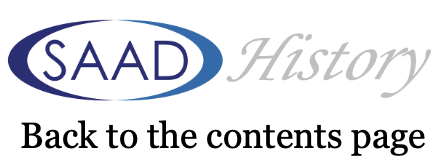Guidance Regulation Standards and Politics
SAAD produced its first guidance document, Guidelines for Physiological Monitoring of Patients during Dental Anaesthesia or Sedation, in 1986. This was authored jointly by dentists and anaesthetists, combining both academic opinion and the opinion of experienced clinicians in primary and secondary care.
From the 2000s, the governance that SAAD developed in combination with The Royal College of Surgeons of England and The Royal College of Anaesthetists led to the further formalisation of standards and ever-closer relations between doctors and dentists. By this point, expected standards of practice concerning staff training, techniques, the management of complications and emergencies, and the overall patient environment were clearly laid down, with SAAD members leading the process of change. Governance subsequently developed in parallel with the various medical specialties until 2013, when the Academy of Medical Royal Colleges Standards and Guidance document set down minimum standards for all medical and dental specialties.
As Christopher Holden and Ian Brett emphasised in their paper on the Society’s history delivered to the 60th Anniversary Symposium, “SAAD has now provided representation or individuals with expertise on every major guidance document in the training and provision of dental pain and anxiety control in the last generation.” SAAD currently has representation on IACSD (Intercollegiate Advisory Committee for Sedation in Dentistry), SDCEP (Scottish Dental Clinical Effectiveness Programme), AoMRC (Academy of Medical Royal Colleges), IEGTSSD (Independent Expert Group on Training Standards for Sedation in Dentistry), DSTG (Dental Sedation Teachers’ Group) and IFDAS (International Federation of Dental Anaesthesiology Societies). Given the overlapping membership of these bodies, “cross-representation” tends to be a naturally occurring process; nevertheless, between 1990 and 2017 SAAD had direct or indirect input into 20 documents, sometimes as an invited member of the group tasked with producing the document, and sometimes via less formal connections.
Since its inception SAAD had been heavily involved in deliberations about the regulation of the dental profession in general anaesthesia, conscious sedation, and resuscitation. In 1971 the government proposed a ban on the operator anaesthetist in dentistry. The effect of this would have been to have abolished provision of the intermittent methohexitone technique on which SAAD's teaching was based at the time. Although not promoted by SAAD the operator anaesthetist was a necessity of the time due to the general lack of services of a separate anaesthetist in general dental practice. Patients faced being denied a safe and effective pain and anxiety control technique based on prejudiced opinion in the Ministry of Health at the time. Along with the British Dental Association, SAAD took on the government. A booklet entitled "Treachery" was sent to every Member of Parliament detailing both the sacrifice of basic rights of patients and professional freedom of doctors and dentists and the potential loss of invaluable years of progress in pain control. Members of Parliament agreed - SAAD and the BDA won. Regulation of general anaesthesia had always been a big issue within the General Dental Council. Although there was little genuine experience amongst its own members, it was fortuitous that there was almost always a member of SAAD Council on the General Dental Council. This was important as regulation of anaesthesia, conscious sedation and resuscitation were always closely connected and issues on which the General Dental Council made frequent recommendations.
Early in SAAD’s history successive Presidents of SAAD including Dr Gerry Holden, Dr Peter Sykes, and Lord Colwyn a Conservative peer, all contributed to maintaining a sensible but safely directed balance of opinion in relation to the regulation of pain and anxiety. Lord Colwyn provided an important link to government during a politically difficult time for anaesthesia and sedation in dentistry.
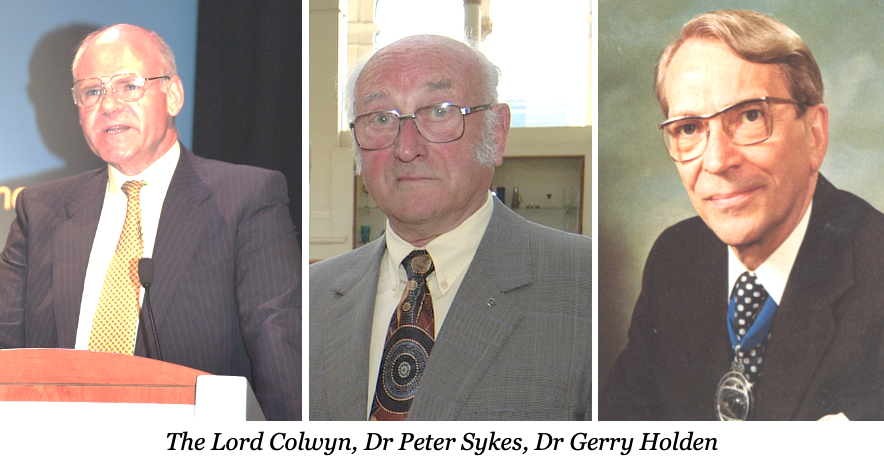
The definition of conscious sedation drafted by Dr Gerry Holden and Professor Paul Bramley of Sheffield University for the Wylie Report in 1978 was subsequently adopted by the General Dental Council and today remains almost unchanged as the accepted definition of conscious sedation by all UK regulatory bodies.
The foundations of SAAD's interest in starting to proactively develop clinical guidelines began in 1989 with the publication in early 1990 of "Guidelines for Physiological Monitoring of Patients During General Anaesthesia or Sedation", led by Dr Peter Cole. This document was well ahead of its time. It heralded SAAD’s drive for proper standards in education and service provision that cemented the societies position in the profession as a trusted teaching and standard setter. This document was occasionally to the irritation of the “academic authorities” but clearly supported by the profession at large.
In the 1990s a Department of Health sponsored a guidance document on anaesthesia sedation and resuscitation and published "The Poswillo Report". Dr Peter Sykes and Dr David Phillips were influential in stopping the General Dental Council's attempted knee jerk reaction when it considered banning general anaesthesia for dentistry in primary care at a stroke and almost taking conscious sedation with it.
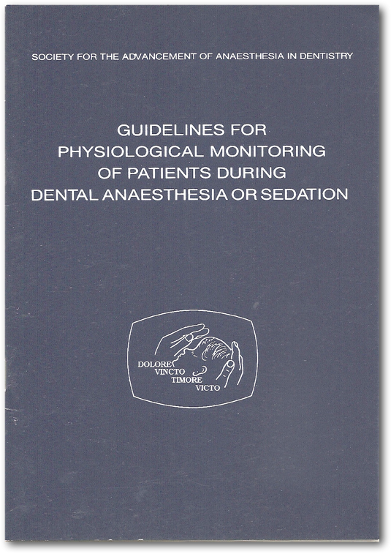
From the early 1990s to this day SAAD has been heavily involved in the production of national guidelines, with representation on nearly every major report concerning anaesthesia, sedation, and resuscitation in dentistry. Particularly active in this area was Dr David Craig, consultant and Head of Sedation and Special Care Dentistry at Guy's Hospital and Dr Christopher Holden, a general practitioner from Derbyshire.
A plethora of guidance occurred in the 1990's due to a few heavily publicised and largely unnecessary deaths associated with general anaesthesia and sedation for dentistry. SAAD was quick to realise that the profession needed a guidance document detailing expected standards, but the Society also took the view that this needed to be guidance which involved all parties interested in the subject.
In 2000 Dr Christopher Holden chaired an Independent Working Party which ultimately produced a report "Standards in Conscious Sedation for Dentistry" the first standards document for conscious sedation in dentistry.
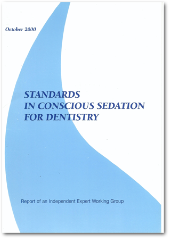
This was later taken forward to a further two documents by a joint committee of the Royal College of Surgeons of England and the Royal College of Anaesthetists. From this standards initiative SAAD played a key role in the production of "Conscious Sedation and the Provision of Dental Care" (Department of Health) in 2003 and "Standards in Conscious Sedation in Dentistry: Alternative Techniques in 2007" (Royal College of Surgeons of England / Royal College of Anaesthetists. At the same time Dr David Craig chaired a report for the Department of Health/Faculty of General Dental Practice (Royal College of Surgeons of England) issuing guidelines for the appointment of dentists with special interest in conscious sedation, importantly providing quality control for NHS Primary Care services.
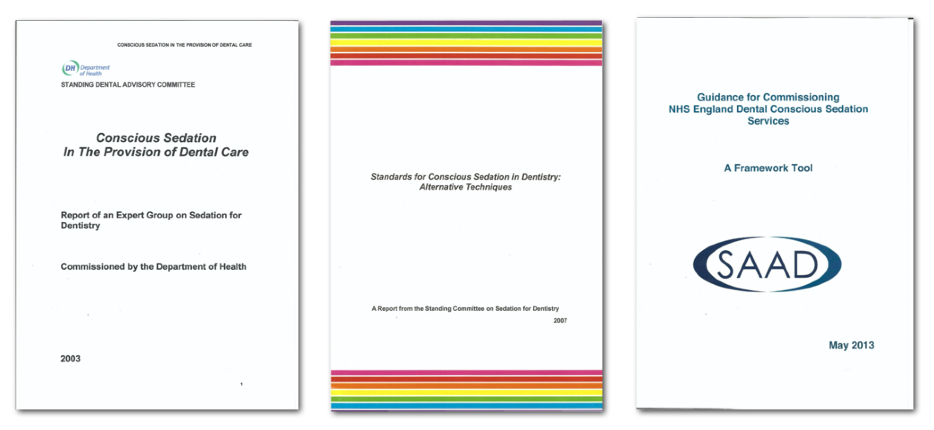
There was a proliferation of guidance until 2021 to meet the challenges of robust patient safety and political need. The prominent documents over the years were:
General Anaesthesia, Sedation and Resuscitation in Dentistry ('Poswillo')
Following several deaths in dental practices, the Department of Health charged Professor David Poswillo, a New Zealand maxillo-facial surgeon, with chairing a working party on anaesthesia, sedation, and resuscitation in dentistry. SAAD had considerable influence in this watershed report, the outcome of which was the development of centres for general anaesthesia and £9 million in government grants to facilities for the purchase of new sedation equipment and staff training. As Dr David Craig commented, “The resuscitation section of the report was less well-received but opened up a productive discussion which led eventually to more practical guidance.”
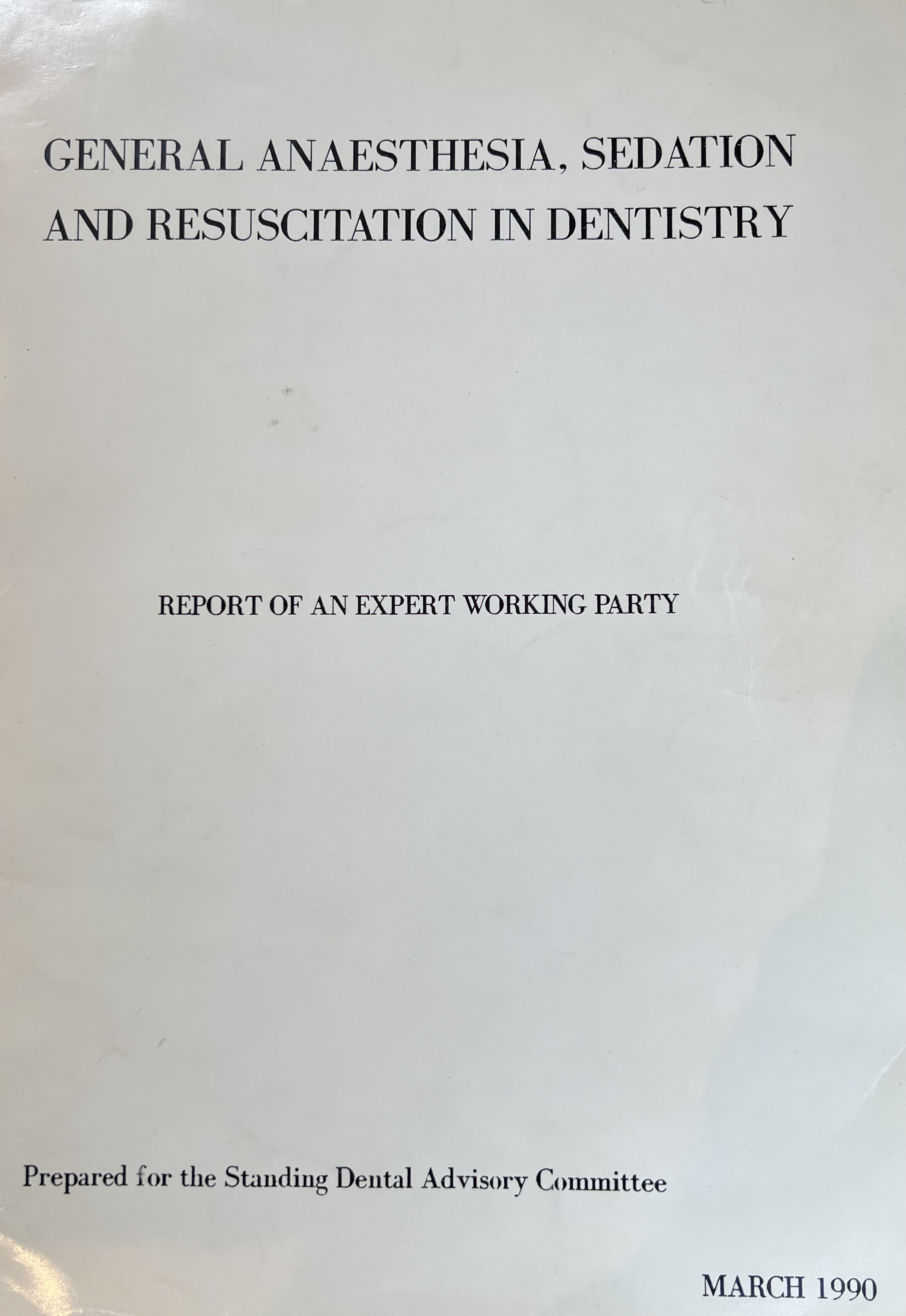
Standards in Conscious Sedation for Dentistry (SAAD) A Conscious Decision (DoH)
SAAD’s Standards in Conscious Sedation for Dentistry was one of the first standards documents in dentistry. Dr Christopher Holden who chaired the working group commented “Conceptually it was derived from the formulaic use by lawyers of steps necessary to be taken and incumbent on an individual in proper behaviour.” The document was surprisingly well-received, and accepted by the profession, regulators, and government.
SAAD’s document quickly stimulated the Department of Health to produce its own document, “A Conscious Decision”, which was essentially an extended version of SAAD’s guidance. The DoH’s document discouraged general anaesthesia for dental treatment and limited it to provision in a hospital setting, a ruling that came into force on 31 December 2001. It encouraged high standards of conscious sedation, including the support of dedicated assistants; appropriate undergraduate and postgraduate training; and arrangements for patient assessment, consent, and patient escorts like those for general anaesthesia. It also called for the availability of better audit data on fatal and non-fatal complications of general anaesthesia and conscious sedation during dental treatment. The latter was still not achieved by 2021.
(DoH), 2002 Conscious Sedation in the Provision of Dental Care
SAAD had a number of contributory authors to this document, which was commissioned by the Department of Health. It defined best practice for conscious sedation for the next 12 years - that is, until the publication of the IACSD Standards in 2015 - and focussed on education and training and the expectation of robust inspection systems. As with earlier documents, SAAD succeeded in moderating the demands of those who wished to see the provision of sedation offered by dentists restricted. However, the document failed to address safety issues associated with multi-drug sedation, the use of which appeared to have increased following the banning of general anaesthesia in non-hospital settings two years previously.
Standards for Conscious Sedation in Dentistry: Alternative Techniques (RCS/RCA)
This document addressed the on-going concerns of both the Chief Medical Officer and Chief Dental Officer about the use of multi-drug sedation techniques, particularly for young children. It also introduced the concept of “Standard” and “Alternative” conscious sedation techniques (later renamed “Basic” and “Advanced” techniques). The intention was that it would supplement the 2003 DoH guidelines but, as Dr Christopher Holden comments, “Much time was spent refereeing the disagreements between dentists and medically-trained doctors about acceptable techniques.” Although “binding” about dental sedationists, some medical practitioners considered themselves exempt from its guidance. New, and in retrospect, unhelpful terminology complicated the final document, which the profession took some time to accept.
Framework for Commissioning Sedation Guidance (SAAD)
Characterised by some as disappointingly the least effective document SAAD has been associated with, being largely ignored by political masters, nevertheless elements of SAAD’s recommendations were developed over the next few years, particularly in relation to the concept of tiering basic and advanced sedation services in service provision.
{accirdion title="A Basis for Nationally Structured Guidance"}
At last pathways for training, converging specialty agreement and a minimum standard was agreed and accepted by the medical professions. Three documents providing overarching guidance from the Academy of Medical Royal Colleges, Standards from the Intercollegiate Advisory Committee for Sedation in Dentistry, and implementation guidance form the Scottish Clinical Effectiveness Programme. SAAD’s input was instrumental into achieving this.
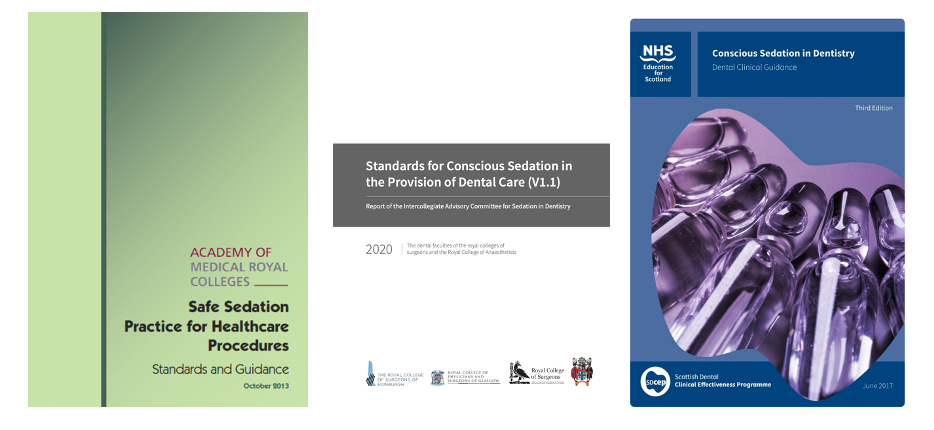
Safe Sedation for Healthcare Procedures (AoMRC)
This “umbrella” standards and guidance document had an impact on all medical and dental practitioners, laying down the lowest common denominator for standards in all specialities. SAAD’s input largely defined the direction of this document as other specialties converged on its teaching methods and safety controls. Christopher Holden concludes, “For the first time, it seems it was accepted by all specialties that dentistry not only had its house in order but led the provision of conscious sedation for medical interventions.”
Conscious Sedation in the Provision of Dental Care (IACSD)
This document, which was the successor to the 2013 AoMRC document, defined the practice of dental conscious sedation in the UK. The IACSD Standards were written by a committee which included representatives of the Dental Faculties of the Surgical Royal Colleges, The Royal College of Anaesthetists, and the Dental Sedation Teachers’ Group. Three members of SAAD were involved - David Craig, Nigel Robb, and Christopher Holden. It covered, amongst other things, guidance on clinical techniques, training, the sedation environment, and patient information. An updated version of SAAD’s own Safe Sedation Practice Scheme was intentionally published on the same day as the IACSD document, and its extent, aims and rationale outlined in SAAD’s 2015 Spring newsletter:
Evaluation by a peer review process or alternatively self-reflection, contributes to patient safety and reduced morbidity. This scheme is a quality assurance programme aiming to promote a consistent approach which can be applied in any environment providing conscious sedation for dentistry in either primary or secondary care. Earlier versions of the scheme centred around a checklist of mandatory or recommended fields. The 2015 version investigates the patient journey in more depth. There is greater emphasis on assessment and patient centric issues whilst core clinical provision is investigated in detail. […] Fundamentally, this is a practical document which is intended to support and encourage sedation practitioners to meet the contemporary national standards.
Conscious Sedation in Dentistry (SDCEP)
This document was commissioned in response to the concerns of a minority about a “lack of clarity” in certain areas of the IACSD Standards, together with a feeling that the Standards themselves were not “evidence based”. In an overview of the Review, Dr David Craig concluded that:
The new SDCEP Guideline is clear and well written but due to its concise style it lacks some of the breadth and depth of the IACSD Standards. It is also heavily dependent on the IACSD report, especially in relation to multi-drug sedation, training, and patient information. The SDCEP group found no new evidence relating to any of the areas about which concern had been expressed in the IACSD Standards. The SDCEP Guideline fails to resolve any of the contentious issues on which IACSD had struggled to reach unanimous agreement, for example pre-sedation starvation. SDCEP’s Guideline is most likely to be of help to practitioners using “Basic” conscious sedation techniques (intravenous, oral, and intranasal midazolam or inhaled nitrous oxide/oxygen) for straightforward patients in a primary care setting.
Service Standards for Conscious Sedation (NHS England)
This politically significant document drew together recent AoMRC, IACSD and SDCEP guidelines to offer guidance to NHS England commissioners. It also defined the process for the accreditation of sedation training courses for dental and medical sedationists and DCPs by the Sedation Training Accreditation Committee (STAC). SAAD Training Board members made a significant contribution to this work.
